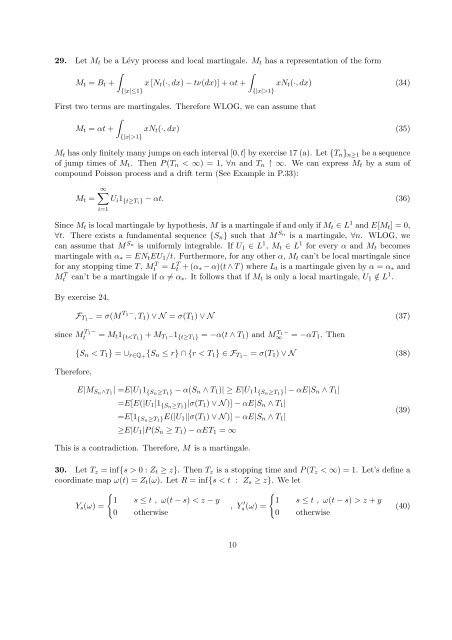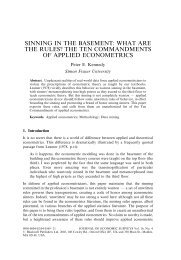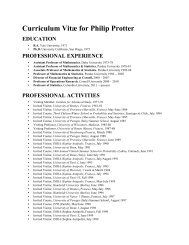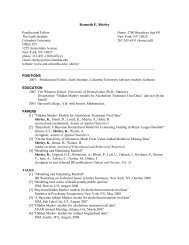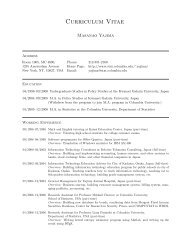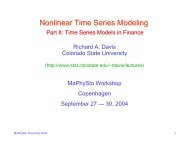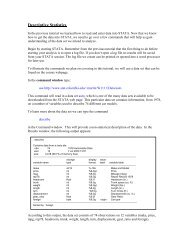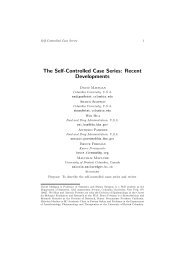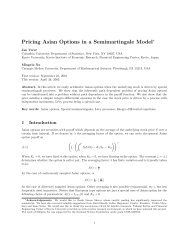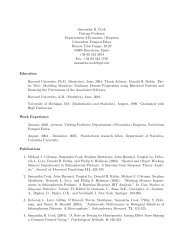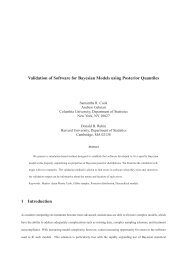Solution to selected problems.
Solution to selected problems.
Solution to selected problems.
Create successful ePaper yourself
Turn your PDF publications into a flip-book with our unique Google optimized e-Paper software.
29. Let M t be a Lévy process and local martingale. M t has a representation of the form<br />
∫<br />
∫<br />
M t = B t + x [N t (·, dx) − tν(dx)] + αt + xN t (·, dx) (34)<br />
{|x|≤1}<br />
{|x|>1}<br />
First two terms are martingales. Therefore WLOG, we can assume that<br />
∫<br />
M t = αt + xN t (·, dx) (35)<br />
{|x|>1}<br />
M t has only finitely many jumps on each interval [0, t] by exercise 17 (a). Let {T n } n≥1 be a sequence<br />
of jump times of M t . Then P (T n < ∞) = 1, ∀n and T n ↑ ∞. We can express M t by a sum of<br />
compound Poisson process and a drift term (See Example in P.33):<br />
M t =<br />
∞∑<br />
U i 1 {t≥Ti } − αt. (36)<br />
i=1<br />
Since M t is local martingale by hypothesis, M is a martingale if and only if M t ∈ L 1 and E[M t ] = 0,<br />
∀t. There exists a fundamental sequence {S n } such that M S n<br />
is a martingale, ∀n. WLOG, we<br />
can assume that M S n<br />
is uniformly integrable. If U 1 ∈ L 1 , M t ∈ L 1 for every α and M t becomes<br />
martingale with α ∗ = EN t EU 1 /t. Furthermore, for any other α, M t can’t be local martingale since<br />
for any s<strong>to</strong>pping time T , Mt<br />
T = L T t + (α ∗ − α)(t ∧ T ) where L t is a martingale given by α = α ∗ and<br />
Mt T can’t be a martingale if α ≠ α ∗ . It follows that if M t is only a local martingale, U 1 /∈ L 1 .<br />
By exercise 24,<br />
since M T 1−<br />
t<br />
Therefore,<br />
F T1 − = σ(M T 1− , T 1 ) ∨ N = σ(T 1 ) ∨ N (37)<br />
= M t 1 {t 0 : Z t ≥ z}. Then T z is a s<strong>to</strong>pping time and P (T z < ∞) = 1. Let’s define a<br />
coordinate map ω(t) = Z t (ω). Let R = inf{s < t : Z s ≥ z}. We let<br />
{<br />
{<br />
1 s ≤ t , ω(t − s) < z − y<br />
Y s (ω) =<br />
, Y ′ 1 s ≤ t , ω(t − s) > z + y<br />
s(ω) =<br />
(40)<br />
0 otherwise<br />
0 otherwise<br />
10


